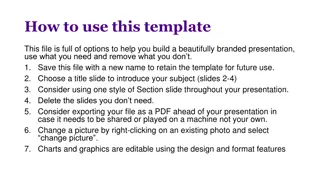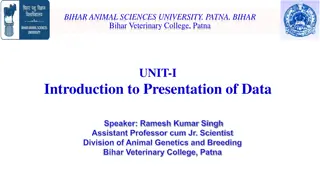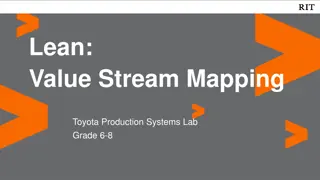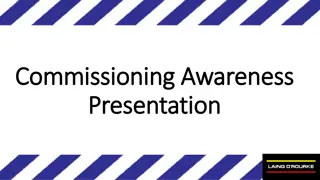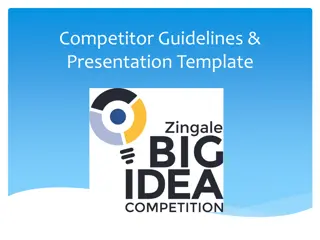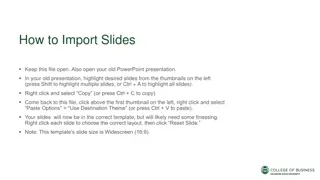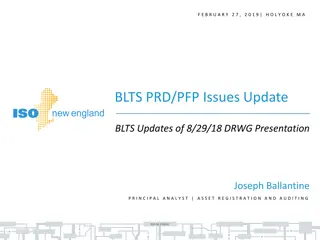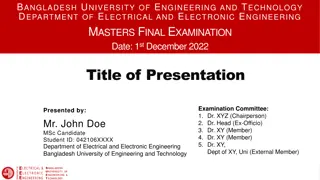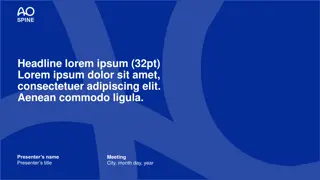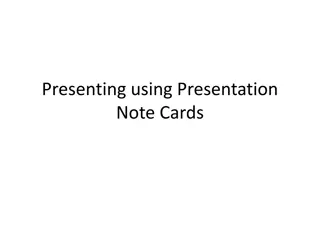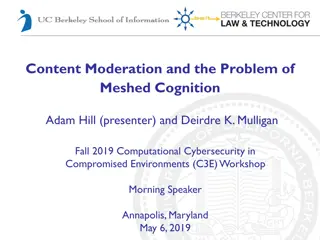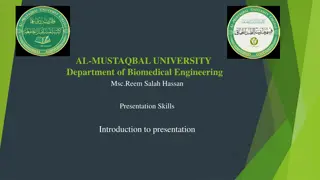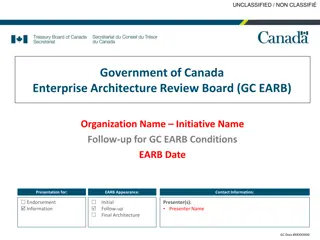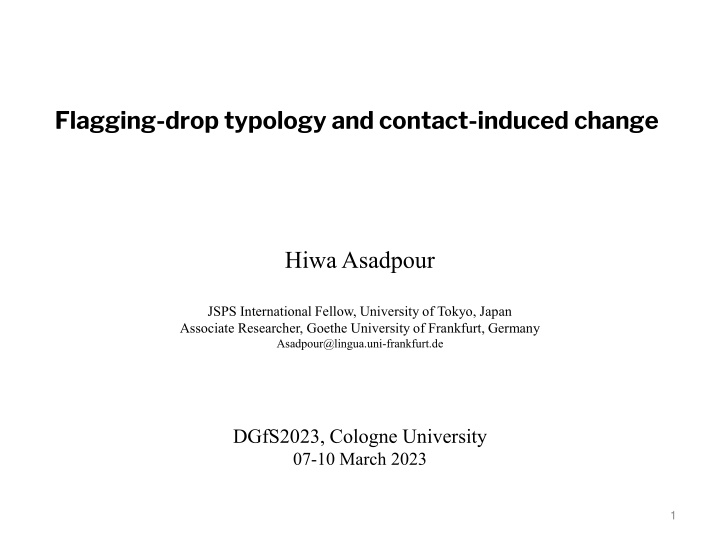
Flagging Drop Typology and Contact-Induced Change in Language Structures
Explore the impact of contact-induced change on language structures through the lens of flagging-drop typology. Delve into linguistic typologies, branchings, and postpositional patterns to understand how languages evolve in contact situations. Uncover the relationship between word order, grammar, and syntactic features, shedding light on the complexities of language evolution. Join Hiwa Asadpour in dissecting these intricacies at DGfS 2023 in Cologne University.
Download Presentation

Please find below an Image/Link to download the presentation.
The content on the website is provided AS IS for your information and personal use only. It may not be sold, licensed, or shared on other websites without obtaining consent from the author. If you encounter any issues during the download, it is possible that the publisher has removed the file from their server.
You are allowed to download the files provided on this website for personal or commercial use, subject to the condition that they are used lawfully. All files are the property of their respective owners.
The content on the website is provided AS IS for your information and personal use only. It may not be sold, licensed, or shared on other websites without obtaining consent from the author.
E N D
Presentation Transcript
Flagging-drop typology and contact-induced change Hiwa Asadpour JSPS International Fellow, University of Tokyo, Japan Associate Researcher, Goethe University of Frankfurt, Germany Asadpour@lingua.uni-frankfurt.de DGfS2023, Cologne University 07-10 March 2023 1
Dryer (2013), WALS Left-branching (OV) (e.g., Turkic) Right-branching (VO) (e.g., Semitic) 2
Dryer (2013), WALS Type 1: VSO, PREP Type 9: SVO, PREP Type 23; SOV, POST 3
Dryer (2013), WALS With overwhelmingly greater than chance frequency, languages with normal SOV order are postpositional. 4
Dryer (2013), WALS Left-branching (OV) Right-branching (VO) postpositional + Genitive-Noun prepositional + Noun-Genitive Dryer (2013) 5
Dryer (2013) Left-branching (OV) Right-branching (VO) postpositional + Genitive-Noun prepositional + Noun-Genitive 6
Dryer (2013) Left-branching (OV) Right-branching (VO) postpositional + Genitive-Noun prepositional + Noun-Genitive OV + prepositional + NG / VO + postpositional + GN 7
Dryer (2013) Left-branching (OV) Right-branching (VO) postpositional + Genitive-Noun prepositional + Noun-Genitive OV + prepositional + NG / VO + postpositional + GN Contact situations 8
Terminology Geography and sample languages 9
TARGET EVENT STRUCTURE AND TARGET (T)? 10
My father goes to school. Physical Goals of verbs of movement (MOTION) Physical Goals of verbs of caused motion (CAUSED-MOTION) Metaphorical Goals of verbs of LOOK John put the book on the table. He looked at the building. He showed the book to his father. Metaphorical Goals of verbs of SHOW Resultant-states of verbs of change-of-state (CHANGE-of-STATE) He became [to] a professor. My father gave the book to his son. Recipients of verbs of transferred possession (GIVE) Beneficiaries of verbs of transferred possession (BENEFICIARY) Addressees of verbs of speech (SAY) He said to me the story of the king. 11
My father goes to school. Physical Goals of verbs of movement (MOTION) Physical Goals of verbs of caused motion (CAUSED-MOTION) Metaphorical Goals of verbs of LOOK John put the book on the table. He looked at the building. He showed the book to his father. Metaphorical Goals of verbs of SHOW Resultant-states of verbs of change-of-state (CHANGE-of-STATE) My father gave the book to his son. Recipients of verbs of transferred possession (GIVE) Beneficiaries of verbs of transferred possession (BENEFICIARY) Addressees of verbs of speech (SAY) He said to me the story of the king. 12
My father goes to school. Physical Goals of verbs of movement (MOTION) Physical Goals of verbs of caused motion (CAUSED-MOTION) Metaphorical Goals of verbs of LOOK John put the book on the table. He looked at the building. He showed the book to his father. Metaphorical Goals of verbs of SHOW Resultant-states of verbs of change-of-state (CHANGE-of-STATE) He became [to] a professor. My father gave the book to his son. Recipients of verbs of transferred possession (GIVE) Beneficiaries of verbs of transferred possession (BENEFICIARY) Addressees of verbs of speech (SAY) He said to me the story of the king. 13
My father goes to school. Physical Goals of verbs of movement (MOTION) Physical Goals of verbs of caused motion (CAUSED-MOTION) Metaphorical Goals of verbs of LOOK John put the book on the table. He looked at the building. He showed the book to his father. Metaphorical Goals of verbs of SHOW Resultant-states of verbs of change-of-state (CHANGE-of-STATE) He became [to] a professor. My father gave the book to his son. Recipients of verbs of transferred possession (GIVE) Beneficiaries of verbs of transferred possession (BENEFICIARY) Addressees of verbs of speech (SAY) 14
My father goes to school. Physical Goals of verbs of movement (MOTION) Physical Goals of verbs of caused motion (CAUSED-MOTION) Metaphorical Goals of verbs of LOOK John put the book on the table. He looked at the building. He showed the book to his father. Metaphorical Goals of verbs of SHOW Resultant-states of verbs of change-of-state (CHANGE-of-STATE) He became [to] a professor. My father gave the book to his son. Recipients of verbs of transferred possession (GIVE) Beneficiaries of verbs of transferred possession (BENEFICIARY) Addressees of verbs of speech (SAY) He said to me the story of the king. 15
[+/-flagging] My father goes to school. Physical Goals of verbs of movement (MOTION) Physical Goals of verbs of caused motion (CAUSED-MOTION) Metaphorical Goals of verbs of LOOK John put the book on the table. He looked at the building. He showed the book to his father. Metaphorical Goals of verbs of SHOW Resultant-states of verbs of change-of-state (CHANGE-of-STATE) He became [to] a professor. My father gave the book to his son. Recipients of verbs of transferred possession (GIVE) Beneficiaries of verbs of transferred possession (BENEFICIARY) Addressees of verbs of speech (SAY) Beneficiaries of verbs of transferred possession (BENEFICIARY) He said to me the story of the king. He sings a song for John. 16
SOURCE (cause ) MOVE (OBJECT) TARGET [+/-flagging] My father goes to school. Physical Goals of verbs of movement (MOTION) Physical Goals of verbs of caused motion (CAUSED-MOTION) Metaphorical Goals of verbs of LOOK John put the book on the table. He looked at the building. He showed the book to his father. Metaphorical Goals of verbs of SHOW Resultant-states of verbs of change-of-state (CHANGE-of-STATE) He became [to] a professor. My father gave the book to his son. Recipients of verbs of transferred possession (GIVE) Beneficiaries of verbs of transferred possession (BENEFICIARY) Addressees of verbs of speech (SAY) Beneficiaries of verbs of transferred possession (BENEFICIARY) He said to me the story of the king. He sings a song for John. 17
Flagging types of Targets in the sample languages Flagging types Preposition Postposition Circumposition (pre- postposition) Complex adposition Absolute adposition Clitic adposition Clitic absolute adposition Direct Case Oblique case Bare Mukri NEK + + + NENA + + Azeri Armenian (+) + + + + + + + + + + + + + + + + + + + + + + + + + 18
Flagging types of Targets in the sample languages Flagging types Preposition Postposition Circumposition (pre- postposition) Complex adposition Absolute adposition Clitic adposition Clitic absolute adposition Direct Case Oblique case Bare Mukri NEK + + + NENA + + Azeri Armenian (+) + + + + + + + + + + + + + + + + + + + + + + + + + 19
SAMPLE LANGUAGES AND DATA 20
Kurdish Northeastern Mukri Neo-Aramaic Jewish Christian Turkic Azeri Armenian 21
Kurdish Northeastern Mukri Neo-Aramaic Jewish Christian Turkic Azeri Armenian Data: a) Monologue narrative free speech and conversational data 22
Kurdish Northeastern Mukri Neo-Aramaic Jewish Christian Turkic Azeri Armenian Data: a) Monologue narrative free speech and conversational data b) Crowdsourced experimental data (acceptability judgment) 23
Mukri Kurdish Subject Object Verb Preposition Target ew- n they-PL kit b- k book-INDF =y n =PC.3PL give.PST d be to piy w-ek- n man -DEF-PL They gave a book to the men. 25
Mukri Kurdish Verb-Target (VT) Verb-Target (VT) Subject Object Verb Preposition Target ew- n they-PL kit b- k book-INDF =y n =PC.3PL give.PST d be to piy w-ek- n man -DEF-PL They gave a book to the men. 26
Mukri Kurdish Target-Verb (TV) Target-Verb (TV) Subject Preposition Target Object Verb ew- n they-PL be to piy w-ek- n man -DEF-PL kit b- k=y n book-INDF=PC.3PL give.PST d They gave a book to the men. 27
ANALYSIS OF WORD ORDER VARIATION FLAGGING AND TARGETS 28
Flagging adposition + case % adposition case bare Mukri NENA Armenian Azeri NEK Mukri NENA Armenian Azeri NEK 23 55 4 0 3 14 25 4 3 10 27 0 16 1 26 30 0 7 11 35 2 0 0 4 0 0 0 2 TV 16 34 0 2 0 16 26 VT 27 46 18 5 8
Flagging adposition + case % adposition case bare Mukri NENA Armenian Azeri NEK Mukri NENA Armenian Azeri NEK 23 55 4 0 3 14 25 4 3 10 27 0 16 1 26 30 0 7 11 35 2 0 0 4 0 0 0 2 TV 16 34 0 2 0 16 26 VT 27 46 18 5 8
Flagging adposition + case % adposition case bare Mukri NENA Armenian Azeri NEK Mukri NENA Armenian Azeri NEK 23 55 4 0 3 14 25 4 3 10 27 0 16 1 26 30 0 7 11 35 2 0 0 4 0 0 0 2 TV 16 34 0 2 0 16 26 VT 27 46 18 5 8
70 65 61 60 55 50 48 41 40 36 35 30 27 24 19 19 20 15 12 10 10 6 6 5 5 2 2 1 1 1 1 1 1 1 0 prep. postp. circump. case prep. postp. circump. case Preverbal Postverbal Mukri NEK NENA Azeri Armenian 32
70 Left-branching (OV) Right-branching (VO) 65 61 60 postpositional + Genitive-Noun prepositional + Noun-Genitive 55 50 48 41 40 36 35 30 27 24 19 19 20 15 12 10 10 6 6 5 5 2 2 1 1 1 1 1 1 1 0 prep. postp. circump. case prep. postp. circump. case Preverbal Postverbal Mukri NEK NENA Azeri Armenian 33
CONTACT-INDUCED CHANGE INTERNAL DEVELOPMENT CONTACT-INDUCED NON-CHANGED 34
Cross-linguistically, various studies mainly focus on marking options and their explanations non-marked elements? Direct/oblique case marking Case marking Adpositional marking 38
Cross-linguistically, various studies mainly focus on marking options and their explanations non-marked elements? Direct/oblique case marking Case marking Adpositional marking 39
Languages that did develop case endings to form an oblique case appear to have generalised an inflectional pattern that appeared regularly to forms where this pattern cannot be historically reconstructed. Such analogical phenomena are quite common. One form is identified as the unmarked form and it is this one that receives the generalised case ending. Now, we also see that some languages with case endings do not always mark oblique case although they have the means to do so and although grammar requests an oblique case. There are two ways of looking at that First it is possible to say that this is differential marking, so other factors (e.g. semantic factors) trigger the indication of case marking. In this sense, the noun is always in oblique case (as grammar requests it), but the formal representation differs. So in a language, two forms can be possible one as a marked oblique case and the other one as a differently marked oblique (by zero) that happened to be identical to the direct case. 40
Second, it can be mentioned that case marking is optional depending on other factors. Then there is an unmarked form, which is not indicated for case (neither direct, nor oblique), and a marked form. The unmarked form could be called direct case in contrast to the oblique case , but actually it wouldn t exist, because it is the neutral form. If it is a subject, the language always uses the neutral form, whence it s apparent directness . With adpositions, which sufficiently indicate obliqueness, use of oblique case is superfluous. The speaker has a choice. Using the marked form may have a special effect. In street German for instance, locatives often appear without case marking even though there is no adposition to indicate it as an example 41
(1) Proto-Iranian dative case / accusative case for Targets 43
(1) Proto-Iranian dative case / accusative case for Targets (2) Old Iranian dative case / accusative case for Targets dative case / accusative case for Targets supported by adverbials (that may qualify as adpositions) 44
(1) Proto-Iranian dative case / accusative case for Targets (2) Old Iranian dative case / accusative case for Targets dative case / accusative case for Targets supported by adverbials (that may qualify as adpositions) (3) Middle Iranian direct case for Targets oblique case for Targets direct/oblique case for Targets supported by adverbials (that may qualify as adpositions) 45
(1) Proto-Iranian dative case / accusative case for Targets (2) Old Iranian dative case / accusative case for Targets dative case / accusative case for Targets supported by adverbials (that may qualify as adpositions) (3) Middle Iranian direct case for Targets oblique case for Targets direct/oblique case for Targets supported by adverbials (that may qualify as adpositions) (4) New Iranian direct case for Targets oblique case for Targets direct/oblique case for Targets plus adpositions 46
Flagging 1 adposition +/- case 2 reduced adposition +/- case 3 -adposition +case 4 -adposition -case stage I stage II stage III 47
Flagging 1 adposition +/- case 2 reduced adposition +/- case 3 -adposition +case 4 -adposition -case stage I NENA stage II stage III 48
Flagging 1 adposition +/- case 2 reduced adposition +/- case 3 -adposition +case 4 -adposition -case stage I NENA stage II stage III Mukri TurkicAzeri 49
Flagging 1 adposition +/- case 2 reduced adposition +/- case 3 -adposition +case 4 -adposition -case stage I NENA stage II stage III Mukri TurkicAzeri Armenian NEK 50


